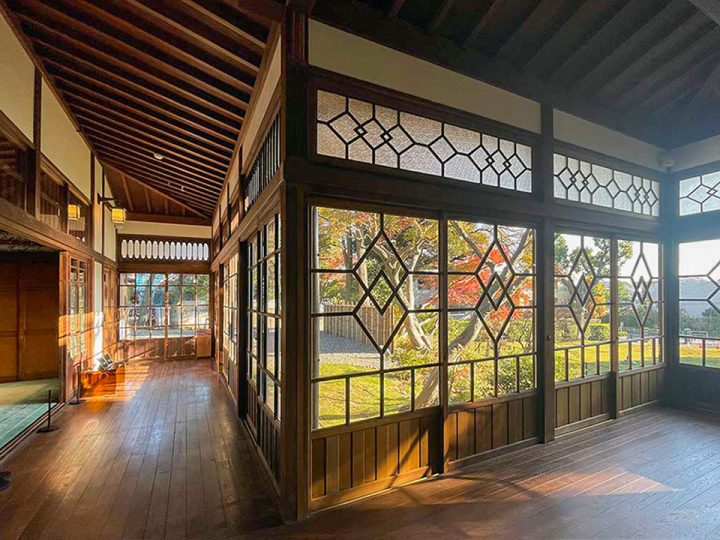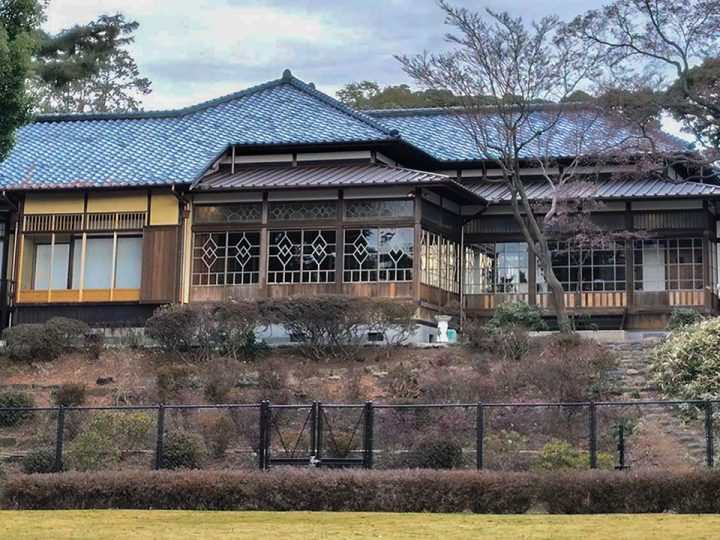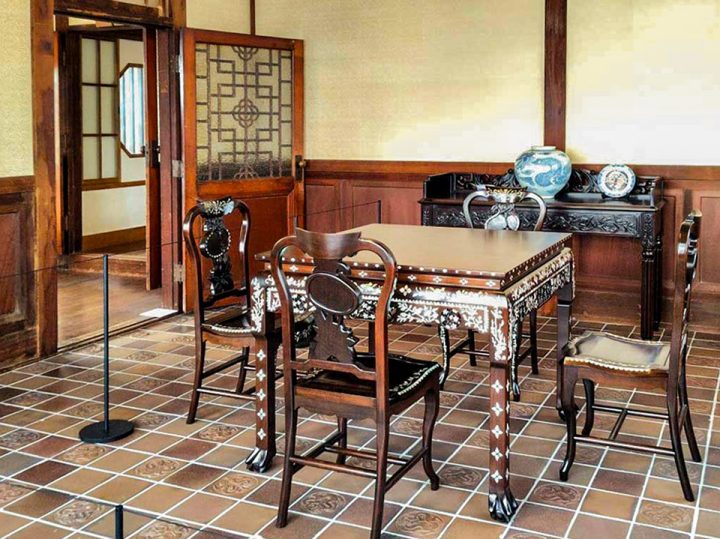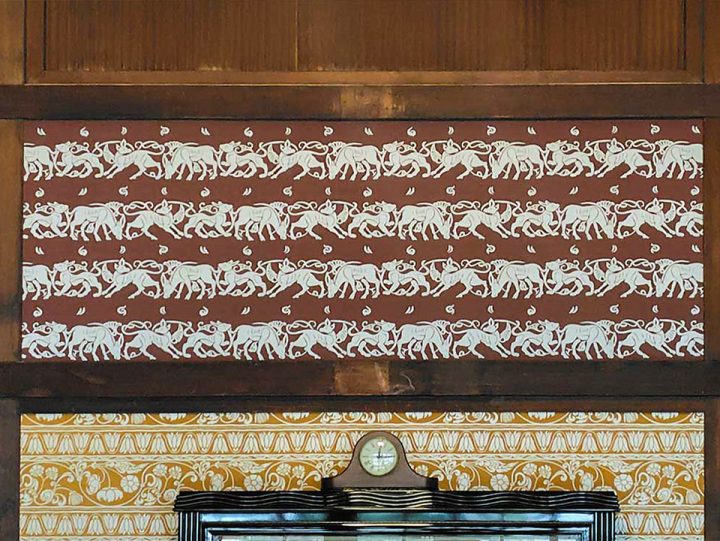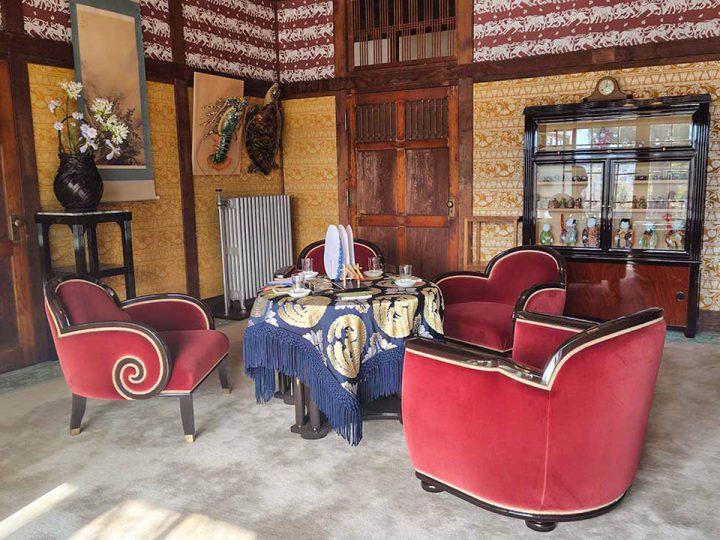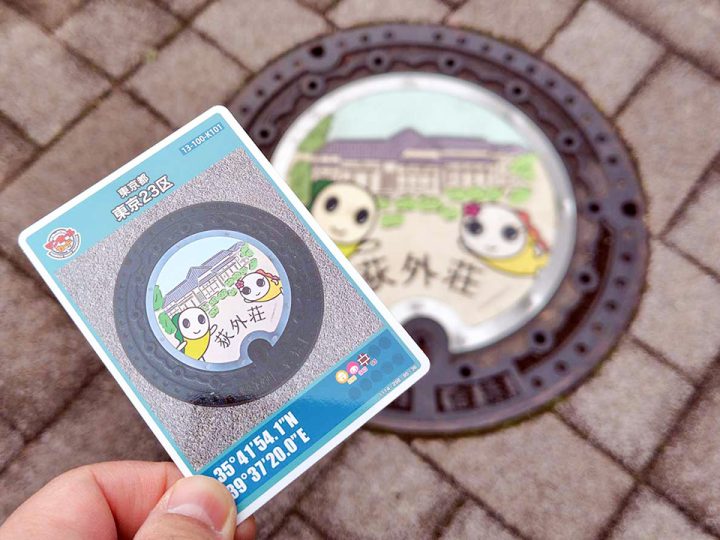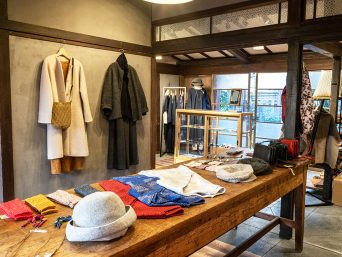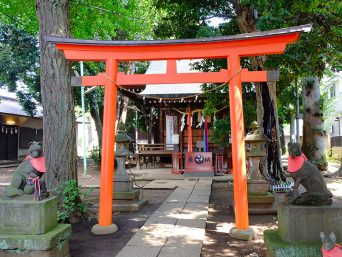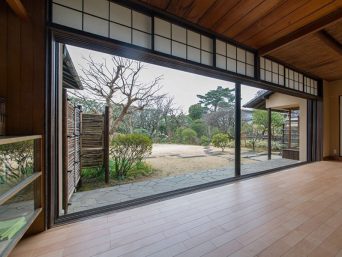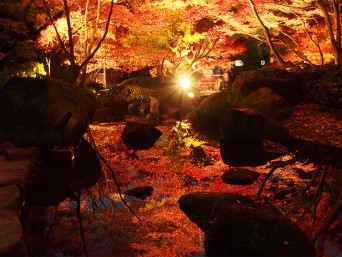- 4AREA
- Ogikubo Sightseeing
- TEKIGAISO (New! 6/24)
- Price:
¥300 yen (¥150 yen for elementary and junior high school students)
- Address:
- 2 Chome-43-36 Ogikubo, Suginami-ku
- Distance from Station:
- 12 minutes on foot from JR/Tokyo Metro Ogikubo Station, South Exit
- Phone:
- 03-6383-5711
- Open:
- 9:00am - 5:00pm, Closed Wednesdays and New Year's holidays (December 29th to January 1st)
Cafe: 10:00am - 4:30pm (last order by 4pm)
- Website:
- https://ogikubo3gardens.jp/tekigaiso/ (external link)
- no-smoking
TEKIGAISO (New! 6/24)
Historically and Culturally Significant Architecture
[published June 2025]
Tekigaiso is the former residence of Fumimaro Konoe, who served three terms as Prime Minister in the early Showa period (1926 – 1989). During the pre-war period, meetings were held here including the “Ogikubo Conference,” which discussed the basic policies of his second administration’s cabinet. In 2016, Tekigaiso was designated as a National Historic Site for its significance in Japan’s political history.
Dr. Tatsukichi Irisawa, a medical doctor who worked as the chief court physician to the Taisho Emperor, commissioned architect Chuta Ito, famed for his work on Heian Shrine and Tsukiji Honganji Temple, to design the villa which was completed in 1927. At that time, the villa was called “Futekiso”, however, it was renamed ‘Tekigaiso’ when Kone acquired the property in 1937 and became fond of the place. Suginami City, in partnership with the local community, spent around 10 years on restoration and development of the site, it opened to the public as Tekigaiso Park in December 2024.
A close look at Chuta Ito’s design
Tekigaiso’s first owner, Irisawa, embraced the modern architectural approach with a focus on functionality and advocated a transition from Japanese floor-seated living to a lifestyle with chairs. Ito, Irisawa’s brother-in-law, was also accomplished in architectural history research, becoming the first person to be awarded the Order of Culture from the architectural world.
The structure of Tekigaiso created by these two forward-thinking minds is truly progressive. The spatial layout is divided into a reception area and a family-living area. Its exterior is calm Japanese style, featuring a single-story building with a high roof. The guest room is decorated with carpets and oriental wallpaper, while the reception room is furnished with a Chinese-styled table set adorned with mother-of-pearl inlay in lacquer. Every room has a distinct interior which offers a feast for the eyes.
The unique decoration is also one of the highlights. Ito is known for incorporating animal and mythical creature motifs into architecture and in Tekigaiso, you can see animal motifs applied in the wallpaper in the dining room and the guest room, and a dragon design in the floor tiles in the reception room.
High level of authentic re-creation by the Tekigaiso Restoration and Development Project
The aim of the Tekigaiso Restoration and Development Project was to move the eastern half of the building which had been relocated to Toshima City in 1960 back to Ogikubo where it was initially founded and reinstate it to its original form as it was when Konoe resided at Tekigaiso.
Re-relocation construction work of cultural property buildings that had been partially relocated is rare nationwide. “We carefully repaired and made maximum use of the remaining timber from the original construction, even the damaged pieces,” the Suginami City official explained.
The level of re-creation of the interior and furnishing is extraordinary. “For the guest room in which the Ogikubo Conference was held, we used photographs from the time as a reference and achieved accurate replication, even small dolls in the display cabinet. As for the tablecloth, we commissioned a textile firm in Kyoto to reproduce it, ensuring that even the pattern placement is the same as original.” The guest room features an exhibition that combines historical scenes and state-of-the-art technology, which invites visitors to witness a re-enactment of the Ogikubo Conference through AR (Augmented Reality) virtual technology.
Various ways to enjoy Tekigaiso
In the estate, there is a café which serves popular local sweets. The shop sells items that make perfect souvenirs from your Tekigaiso visit, such as Japanese washi-style tape with the animal patterns from the guest room’s wallpaper design and 1:200 scale Tekigaiso paper craft kit. On the sidewalk south of the Tekigaiso, there is a manhole cover designed with Suginami City’s official animation characters Namisuke and Nammy and the manhole cover collectable cards (as shown in the photo) are given out at the reception of the Tekigaiso.
In addition, Green Slow Mobility electric vehicles are available to/from Ogikubo Station West Exit which stop at Tekigaiso Park and nearby Otaguro Park. Kadokawa Garden is also nearby, approximately a 5-minute walk from the Tekigaiso Park stop. Why not hop on to the “GreSlo” and enjoy visiting each historical building and garden?
ACCESS
YOU ALSO MIGHT LIKE:
IN THE AREA:








